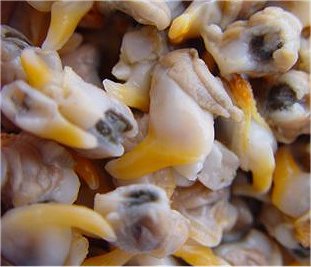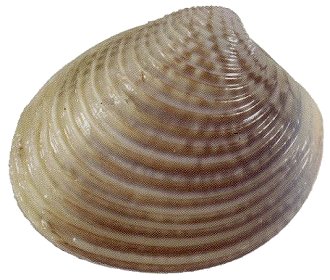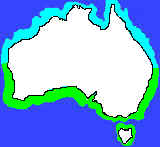|
|
|
|
|
Directory & Info for Fishing,
Angling, Fishing Tackle, Fishing Guides, Fly Fishing, Bass Fishing,
Sports fishing, Game Fishing....
See >>
Info on All types of
Fishing | Angling | Tackle etc
|
| |
|
Glossary of Fish, Seafood and Fishing Terms |
|
|
|
Australian Fish Bag Limits and Size Regulations |
|
Photos of Australian Seafood, Fish, Crustaceans &
Cephalopods and Information on each.... |
|
Abalone, Blacklip |
|
Albacore
Tuna |
|
Baler Shell |
|
Barbounia, Tiny |
|
Barracouta |
|
Barramundi |
|
Bass, Sea |
|
Batfish |
|
Batfish, Silver |
|
Blackfish |
|
Boarfish |
|
Bonito Tuna |
|
Bonito, Watson's Leaping |
|
Bream |
|
Bream, Butter |
|
Bream, Slate |
|
Bug, Moreton Bay
(Slipper Lobster) |
|
Bug, Balmain |
|
Butterfish |
|
Calamari,
Southern |
|
Carp, European |
|
Catfish, Blue |
|
Catfish, Lesser Salmon |
|
Cockles |
|
Cod, Bar |
|
Cod, Blue eye |
|
Cod, Coral Rock |
|
Cod, Ghost |
|
Cod, Maori |
|
Cod, Murray
|
|
Cod, Southern Rock |
|
Cod, Spotted |
|
Cod, Tomato |
|
Cod, Wirrah |
|
Cod, Yellow Spotted |
|
Coral Trout |
|
Cowanyoung |
|
Crab, Blue Swimmer |
|
Crab, Champagne |
|
Crab, Giant
|
|
Crab, Mud |
|
Crab, Spanner |
|
Crawfish |
|
Cuttlefish |
|
Dart Fish |
|
Dolphin Fish |
|
Dory, John |
|
Dory, Mirror |
|
Dory, Silver
|
|
Drummer, Southern |
|
Eel, Longfin |
|
Emperor, Red |
|
Emperor, Red Throat |
|
Flathead |
|
Flounder, Small Toothed |
|
Flutemouth, Rough |
|
Frost Fish |
|
Garfish |
|
Gemfish |
|
Goatfish |
|
Grouper |
|
Gurnard, Red |
|
Gurnard, Spotted |
|
Hairtail |
|
Hump Headed
Maori Wrasse |
|
Hussar |
|
Jackass Fish |
|
Jacket, Ocean |
|
Jacket, Sea |
|
Jewfish |
|
Jobfish, Gold Banned |
|
Jobfish, Rosy |
|
Kingfish,
Yellowtail |
|
Latchet Fish |
|
Leatherjacket, Reef |
|
Ling |
|
Lobster - Eastern
Rock |
|
Lobster - Southern Rock |
|
Long Tom |
|
Luderick |
|
Mackeral, Jack |
|
Mackerel, Slimey |
|
Mado |
|
Mahi Mahi |
|
Mangrove Jack |
|
Marlin, Black |
|
Marlin, Blue |
|
Marlin, Striped |
|
Melon Shell |
|
Monkfish |
|
Mono |
|
Moon Fish |
|
Morwong |
|
Morwong, Red |
|
Mullet - Roe |
|
Mullet, Diamond Scale |
|
Mullet, Red |
|
Mullet, Sea |
|
Mullet, Yelloweye |
|
Mulloway |
|
Mussels Black |
|
Mussels Greenlip |
|
Nanygai |
|
Octopus |
|
Orange Roughy |
|
Oreo, Black |
|
Oyster,
Native |
|
Oyster,
Pacific |
|
Oyster, Sydney Rock |
|
Parrot Fish |
|
Parrot Fish (2) |
|
Perch, Ocean |
|
Perch, Saddle Tail Sea |
|
Perch, Silver |
|
Perch, Splendid |
|
Perch, Stripey Sea |
|
Pig Fish |
|
Pike |
|
Pineapple Fish |
|
Prawn, Banana |
|
Prawn, King |
|
Prawn, Red Spot |
|
Prawn, School |
|
Prawn, Tiger |
|
Queenfish, Needleskin |
|
Rainbow Runner |
|
Redclaw Crayfish |
|
Redfish |
|
Ribaldo |
|
Ribbon Fish |
|
Rudder Fish |
|
Salmon, Atlantic |
|
Salmon, Australian |
|
Scad |
|
Scallops,
Queensland |
|
Scallops, Tasmanian |
|
Scorpion Fish, Raggy |
|
Shark |
|
Shark Black Tip |
|
Shark, Blue |
|
Shark Bronze Whaler (Dusky) |
|
Shark, Bull |
|
Sharks Fins |
|
Shark, Gummy |
|
Shark, Mako |
|
Shark, School |
|
Shark,
Tiger |
|
Shark,
Whiskery Reef |
|
Shark, White |
|
Shrimp, Mantis |
|
Sicklefish |
|
Silver Biddy |
|
Snapper |
|
Snapper, Big Eye |
|
Snapper, Fry Pan |
|
Snapper, Gold Band |
|
Snapper, King |
|
Snapper,
Red |
|
Snapper, Red Tropical |
|
Sole |
|
Sole, Tongue |
|
Squid, Arrow |
|
Squirrel Fish |
|
Stargazer |
|
Stingray, Butterfly |
|
Stripey Sea
Perch |
|
Surgeonfish, Sixplate Sawtail |
|
Sweetlip, Slatey |
|
Sweetlip, Yellow |
|
Swordfish |
|
Tailor |
|
Tarwhine |
|
Tilefish,
Pink |
|
Trevally, Big Eye |
|
Trevally, Golden |
|
Trevally, Silver |
|
Triple Tail |
|
Trout |
|
Trumpeter, Striped |
|
Tuna,
Albacore |
|
Tuna, Bigeye |
|
Tuna, Bluefin |
|
Tuna, Longtail |
|
Tuna, Skipjack |
|
Tuna, Striped |
|
Tuna, Mackerel |
|
Tuna, Yellowfin |
|
Venus Tusk Fish |
|
Whiting, Sand |
|
Whiting, School |
|
Wrasse |
|
Yabby,
Freshwater Crayfish |
|
Yellowtail |
|
FULL LIST of Fish &
Seafood |
|
Beche De Mer
(Sea Cucumber - Trepang) |
|
Amberfish |
|
Blackfish |
|
Black Teatfish |
|
Brown Sandfish |
|
Curryfish |
|
Elephants Trunks fish |
|
Greenfish |
|
Lollyfish |
|
Pinkfish |
|
Prickly Redfish |
|
Sandfish |
|
Stonefish |
|
Surf Redfish |
|
White Teatfish |
|
|
|
Commercial Seafood
Directory |
|
Sea-Ex Seafood, Fishing, Marine
Directory |
|
Aquaculture Directory |
|
Seafood
Trading Board |
|
Commercial Fishing |
|
Seafood Information by
Country |
|
Fish Photos & Fish
Information |
|
Interesting Fish Facts & Trivia |
|
Country Directories |
|
Thailand Business
Directory |
|
Seafood
|
|
Wholesale Seafood
Suppliers Australia |
|
Wholesale Seafood
Suppliers International |
|
Retail Seafood
Sales |
|
Seafood
Restaurants |
|
Seafood
Recipes |
|
Seafood
Information |
|
Seafood
Industry Resources |
|
Sea-Ex Seafood & Fishing
Directory -
Home Page |
|
Cockles (Veneridae),
Clams, Pippies, Vongole Photographs
and Information
|
Cockles are a bi-valve mollusc. They inhabit tidal flats to 5 metres depth.
Cockles are gathered for food and bait along southern coasts of Australia. They
are collected by digging with large forks in the sandy shores of bays and estuaries and by
wading.
They are sold live in the shell to local restaurants or distributors.
‘Cockles and Mussels
alive, alive-o’, the traditional call of shellfish sellers as
they wheeled their barrows through the markets, immortalised in
the Irish folk song Molly Malone, reminds us that Cockles, along
with Oysters and other bivalves, were once an inexpensive snack
for Britain’s working class.
Bivalve molluscs are any shellfish with a double hinged shell,
many of which are commonly referred to as clams; ‘clam’ once
meant ‘shut’ and these creatures can shut their shells tightly
to protect themselves from predators. Many of our most popular
shellfish, such as Oysters, Scallops and Mussels, are bivalves.
But we also have some equally delicious, less commonly used
(therefore less expensive) bivalves, mainly Vongole and Pipis.
Although Australia doesn’t have the large range of clams
available in North America and Europe, we do have some other
occasionally-seen clams, such as Surf Clams, Sydney Cockles,
Blood Cockles and Razor Clams.

|
 |
 |
|
|
| Scientific Name |
Family: Veneridae |
| Location |
Southern half of Australia |
| Season |
All year round |
| Size |
Maximum diameter of about 8cm |
| Australian Species Code |
00 657901 |
|
Nutritional
Information
For every 100 grams raw product
for Cockles fillet. |
|
Kilojoules |
- |
|
Cholesterol |
- |
|
Sodium |
- |
|
Total fat
(oil) |
- |
|
Saturated
fat |
- |
|
Monounsaturated fat |
- |
|
Polyunsaturated fat |
- |
|
Omega-3, EPA |
- |
|
Omega-3, DHA |
- |
|
Omega-6, AA |
- |
|
|
|
Vongole (Katelysia
scalarina, K.peronii and K.rhytiphora) are members of the venus
shell family (their name means ‘clams’ in Italian). Found around
the southern Australian coast from Fraser Island in Queensland
to Cape Leeuwin in WA (including Tasmania) and harvested from
sheltered or sandy subtidal sediment of tidal flats and estuary
mouths, they were previously known as sand cockles. The larger
K.scalarina are tidal, while the smaller K.rhytiphora are
intertidal. Both the SA and Tasmanian fishery are increasing and
there have been aquaculture trials in Port Stephens (NSW) with
K.rhytiphora. Shells are almost oval with concentric ridges, and
range from white to light brown in colour, sometimes with darker
zigzag markings; K.scalarina are pale yellow and K.rhytiphora,
greyish-purple. Shell diameter ranges from about 2-5cm, with
K.scalarina being the largest and K.rhytiphora the smallest.
Pipi (Donax
deltoides) belongs to a related family (the Donacidae, or Pipi,
family), and is also known as Coorong cockle, eugarie, Goolwa
cockle and ugari. It’s found all around the Australian coast but
is mainly hand-harvested from the intertidal zone of sandy surf
beaches south from the NSW-Queensland border to the beginning of
the Great Australian Bight in SA. Its smooth, wedge-shaped,
cream to pale brown shell can sometimes be slightly yellow or
green and have pinky-purple bands and averages 5-6cm in diameter
(but can grow to around 8cm); those harvested from SA are
typically smaller than those from NSW and Victoria. As the most
common sizeable mollusc found along ocean beaches in NSW, they
constituted an important food source for indigenous Australians
for thousands of years, as is evidenced by the many middens of
Pipi shells left behind.
Surf Clam (Dosinia
caerulea), also called dosinia, is another member of the venus
shell family, the same family as the American Quahogs (or
Hardshell Clams), the Warty, and Smooth, Venus Clams and
Carpet-shell Clams found in the Mediterranean. Its rough,
circular shell, about 3-4.5cm in diameter, varies in colour from
cream through greyish white or pale yellow to light brown, and
has sculpted, concentric ridges, often with darker patterning.
Sydney Cockle (Anadara trapezius) is found in estuaries,
mud flats and seagrass beds. Its shell can be up to 8cm in
diameter and has prominent, outward-radiating ribs.
Blood Cockle (Anadara granosa) is named for the reddish
liquid released when it’s opened and the sometimes reddish tinge
of its shell, which is usually about 6cm in diameter. It is
found intertidally in northern Australia.
Razor Clam (Pinna bicolor), also called razor fish, has a
long narrow shell, roughly the shape of an old-fashioned
cutthroat razor, and is harvested in sand or mud near the low
water mark on very sheltered bays in SA.
|
|
Cooking
Pippies, Clams, Vongole & Cockles:
 Buying Buying
Clams, Cockles and Pipis are all sold live. Look for brightly
coloured, intact, lustrous shells, that are closed or close when
tapped or gently squeezed, and a pleasant fresh sea smell. Due
to their sandy habitat, they can contain a bit of grit; ask your
fishmonger if they have been purged (stored in aerated saltwater
for at least 24 hours to eliminate sand), if they haven’t, see
below for purging instructions.
Storing
Live shellfish should be consumed as soon as possible after
purchase. Place them in a container, cover with a damp cloth and
store in the warmest part of the refrigerator, which is usually
the crisper (optimum 5°C), ensuring that the covering remains
damp. Before cooking, discard any shells that are open and don’t
close when tapped or gently squeezed (you may need to give them
10-20 minutes out of the fridge to warm up first). Freeze meat
for up to 3 months below -18ºC.
Cooking
If they haven’t been purged, place them in a solution of cool
water and sea salt (30g salt to each litre of water) for several
hours, or overnight, in a cool part of the house (if you
refrigerate them they’ll close up and won’t ‘spit out’ the
sand). The shells yield an average of 20-30% meat, so allow
around 600g of whole shells per person as a main course. Vongole
have a medium flavour and moist, firm flesh. Pipis have a
slightly stronger, richer flavour, and can occasionally be a bit
chewy. All Clams, Cockles and Pipis go well with chilli,
coriander, garlic, parsley, tomato and white wine, while Pipis
also work with stronger flavours such as anchovies, Chinese
black beans, ginger, soy sauce and Worcestershire sauce. They
all lend themselves to a wide range of cooking styles, including
steaming, poaching, stir-frying, baking, grilling, barbecuing
(in the shell), smoking and pickling; and, when very fresh,
they’re great served raw (sashimi). The firm flesh works
particularly well in soups, curries and stir-fries. Due to their
similarities, Vongole, Pipis and other clams can be substituted
for one another in many recipes and are often a good substitute
for Blue Mussels. Remember that they need very little cooking
and are ready virtually as soon as the shell opens. When cooking
a large batch, it’s best to remove the individual shells from
the pan as each one opens, so as not to overcook them. There are
often a few stubborn shells that don’t open regardless of how
long they’re cooked, traditional wisdom was to discarded these
(as they may have already been dead prior to cooking), you can
however pry them open over the sink, and, if they smell good,
they’re good to eat; if they’re bad your nose will tell you!
Remove the meat from the shells or serve them shell and all. If
serving in the shell, remember to put a large bowl on the table
for discarded shells with some finger bowls and big napkins.
Clam
Recipes
|
|
Commercial Fishing For
Clams, Cockles, Vongole & Pippies:
Cockle harvesting is a very low impact way of producing a
valuable source of protein. Cockles are normally harvested with
handheld rakes in shallow areas which workers can reach on foot.
Small boats are used to harvest cockles in deeper areas, with
slow moving manual dredges. The harvesting process consumes
little to no fuel or energy.
CLAMS & VONGOLE
Exporters of Clams |
Importers of Clams |
Processors of Clams |
Wholesale Suppliers of Clams |
Agents for Clams
See Also:
Angelwing Clam,
Hard Clam,
Littleneck Clam,
Manila Clam,
Razor Clam,
Shortneck Clam,
Surf Clam,
Venus Clam,
Yellow Clam
COCKLES
Exporters of Cockles |
Importers of Cockles |
Processors of Cockles |
Wholesale Suppliers of Cockles |
Agents for Cockles
WINKLES
Exporters of Winkles |
Importers of Winkles |
Processors of Winkles |
Wholesale Suppliers of Winkles |
Agents for Winkles
PIPPIES
Exporters of Pippies |
Importers of Pippies |
Processors of Pippies |
Wholesale Suppliers of Pippies |
Seafood Agents for Pippies |
|
|